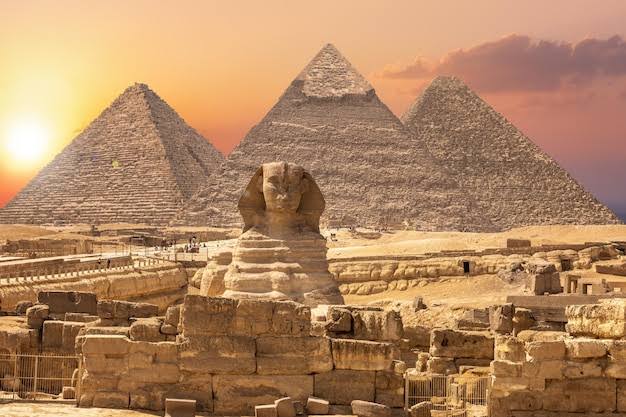Ancient Egypt was one of the most amazing and long-lasting civilisations in human history, spanning more than 3000 years from the dawn of the 4th millennium BC to the twilight of the 7th century AD.
Throughout this incredible era, it had various names, reflecting its changing political and cultural situation. Here are some of the names that ancient Egypt went by over time, based on research by the renowned Egyptologist Mostafa Waziry.
Kemet, or “black land”, was the name that ancient Egyptians gave to their country, because of the dark and rich soil that the Nile River left behind. Kemet was one of the first and most advanced civilisations in the world, lasting from around 3100 BCE to 30 BCE. Kemet created many impressive works of art, architecture, literature, religion, science, math, medicine and politics. Some examples are the pyramids of Giza, the Great Sphinx, the temples of Karnak and Luxor, and the Valley of the Kings. Kemet also invented a system of writing, called hieroglyphs, in which are recorded its history, culture, and beliefs. Kemet’s legacy has shaped many parts of modern society, from philosophy and religion to art and architecture.
Deshret is the name of the ancient Egyptian Red Crown that symbolised the rule over Lower Egypt. It was also used as a hieroglyph for the letter “n” and the word for the desert lands around the Nile valley. Deshret was associated with the god Horus, who received it from his father Geb, the earth god. The Red Crown was later combined with the White Crown of Upper Egypt to form the Double Crown, representing the unification of the two regions.
Ta-oui is a name of ancient Egypt that means “the two lands”. It refers to the unified kingdom of Upper and Lower Egypt, which was established by the king Menes around 3100 BCE. According to ancient Egyptian mythology, the two lands were originally separate and ruled by different gods, until Menes conquered Lower Egypt and united them under his crown. Ta-oui was also the name of one of the four sons of Horus, the falcon-headed god of kingship and the sky. Horus was the son of Osiris and Isis, who avenged his father’s murder by his uncle Set and became the ruler of Egypt.
Ta-mhou is a name of ancient Egypt that means “the northern land”. It refers to the region of Lower Egypt, which was located near the Mediterranean Sea and the Nile Delta. Ta-mhou was also one of the two kingdoms that unified to form the first dynasty of Egypt, along with Ta-shemau, meaning “the southern land”. Ta-mhou was symbolised by the papyrus plant, while Ta-shemau was symbolised by the lotus flower. The rulers of Ta-mhou wore a red crown, called the deshret, to distinguish themselves from the rulers of Ta-shemau, who wore a white crown, called the hedjet.
Ta-Meri, is a name of ancient Egypt that means “the beloved land”. It reflects the affection and pride that the Egyptians had for their country, which they considered to be a gift from the gods. Ta-Meri was also the name of a goddess who personified the fertile soil and the life-giving waters of the Nile. She was often depicted as a woman wearing a crown of papyrus and lotus flowers, symbols of Upper and Lower Egypt. Ta-Meri was associated with the goddess Maat, who represented truth, justice and harmony in the world.
Hwt-ka-Ptah: or “the house of the ka of Ptah”, the name reflects the belief that Ptah, the god of craftsmen and creation, dwelled in this city and protected it. Hwt-ka-ptah was the name of the first nome, or province, of Lower Egypt, which encompassed the area around Memphis. The city was founded by Menes, the first pharaoh of a unified Egypt, and remained a political and economic hub until the New Kingdom, when Thebes became the new capital. Hwt-ka-ptah was home to many temples, palaces, and monuments, such as the colossal statue of Ramses II and the Serapeum, where the sacred Apis bulls were buried.
Aigyptos is the ancient Greek name for the land of Egypt, derived from the Egyptian word Hwt-ka-Ptah.
Misr: Some scholars say it’s from an old Egyptian word that means “country” or “civilisation”. Others say it’s from a Hebrew word that means “border” or “fortress”. Misr is mentioned in Islam’s Holy Book and is still used today as the official name of Egypt in Arabic.






Discussion about this post